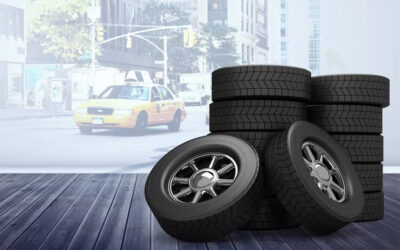What do brake pads have in familiar with engine oil and air filters? Well, they’re all candidates for routine maintenance on your car, truck, or SUV, along with tire rotation and many other service items. Each of them is essential to keep your vehicle running safely and smoothly on the road. Therefore, your vehicle manufacturer recommends servicing each item regularly as per the maintenance schedule.
Your brake pads need to be replaced from time to time – usually around fifty thousand miles (give or take depending on your driving habits). This is because the friction material applied to them wears away with use. When your brake pads become too thin to use safely (somewhere between 3-6 mm), it’s time for a brake inspection or replacement.
As a driver, you already know that your brakes are the most important safety feature of your vehicle. And you probably understand that brake pads need to be replaced from time to time. But what about your brake rotors? Do they also need to serve? And if so, can they be resurfaced, or do they need to be replaced?
What is a brake rotor?
The brake rotor is a component of the disc brake system featured on most vehicles on the road today. The rotor is the heavy metal disc that connects your wheel to the wheel hub. When the wheel and tire spin, the rotor spins with them. Your brake pads are sandwiched around the rotor. When you depress your brake pedal, a hydraulic clamping mechanism (called a brake caliper) squeezes the brake pads against the sides of the rotor, creating friction to slow and stop your car.
Over time and with use, the friction material on your brake pads, which may be made of organic, semi-metallic, or ceramic materials, will wear down. This is why you need to change your brake pads regularly.
While your rotors aren’t necessarily built to take sacrifices like brake pads, they will also wear out. They get lean. And excessive heat from aggressive braking or heavy loads can cause glazing and hot spots on your rotors. Rotor lifespan is affected by the type of brake pads you use (semi-metallic pads cause more wear on the rotor than organic or ceramic pads), the amount of exposure to salt and moisture, and your driving style. If you apply your brakes or drive aggressively, your rotors will wear out faster. The quality of the rotors can also impact how long they last. So your rotors need to be serviced too.
What is rotor resurfacing?
Traditionally, brake rotors were machined, or replaced each time new brake pads were installed. This means that a technician will measure the rotors to see if they meet the minimum thickness recommended by the manufacturer. If they did, and if they had enough material left for resurfacing, the technician would disassemble the brakes, remove the rotors, set them on a machine (brake lathe), and ream them to make them smooth and perfect. . , Grinding will leave enough material to go around.
But earlier brake rotors were heavy and thick. They had a sufficient material thickness to undergo several resurfacing events, therefore enduring multiple brake pad replacements. The rotors of today’s vehicles, like your car’s, are made to be lightweight. This means they are thinner than older rotors and often do not have enough margin for resurfacing. So rotor resurfacing, although still often done (indeed, newer machines, such as on-car brake lathes make the process more efficient and precise), is not as common as in the past. Nevertheless, if a rotor is determined to be rough enough to be resurfaced and is not warped or broken, resurfacing is an option.
Replacement vs Resurfacing
When is renewal an option? When a mechanic measures a rotor and finds that the tolerance is within acceptable limits for the process. Otherwise, replacement is necessary.
But sometimes replacing the rotor is a better choice right from the start. For example, many rotors cost much less than they do today. It is often more economical to replace the rotor than to re-surface it, saving you time and money. Or in the case that you’ve ignored warning signs that your brake pads need to be replaced, leaving your rotors damaged from metal-to-metal contact. Those damaged rotors usually require replacement, not retrofitting.
Some vehicle manufacturers also require that you replace your rotors instead of reflashing them. Otherwise, most industry specialists advise that you should replace them every 30-70K miles. In any case, if the rotors are beyond resurfacing, replacement is your only option. Then again, of course, it might be your best choice anyway.
If your vehicle is in need of disc brake service, have a qualified mechanic at a trusted repair shop consider the brake system and measure the rotors. If they show no signs of cracking or serious damage, and if they have enough material for resurfacing (and if the manufacturer allows it), your technician may recommend resurfacing. On the other hand, if your rotors are too thin or too damaged—or if resurfacing isn’t economical—you’ll probably need to replace them.









0 Comments